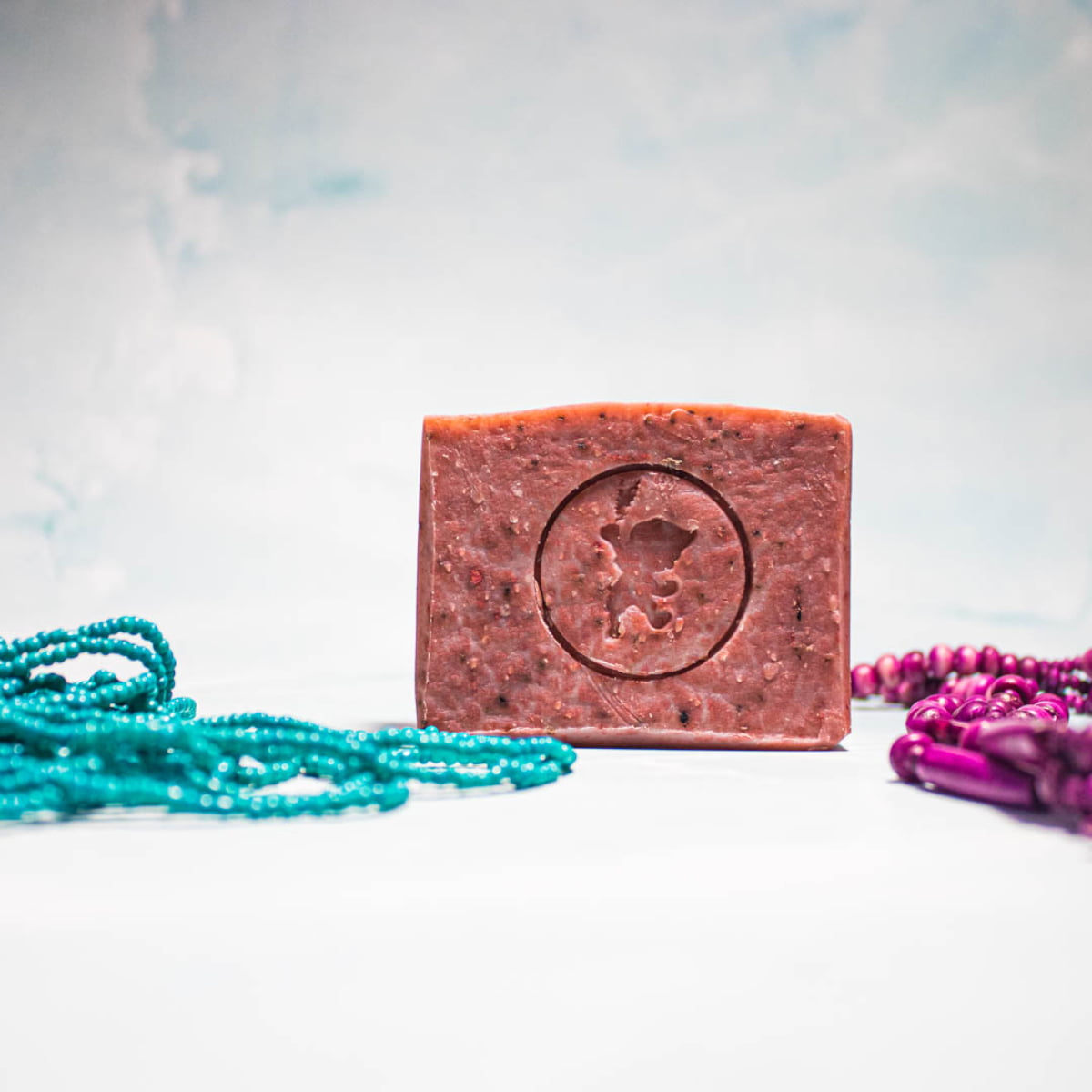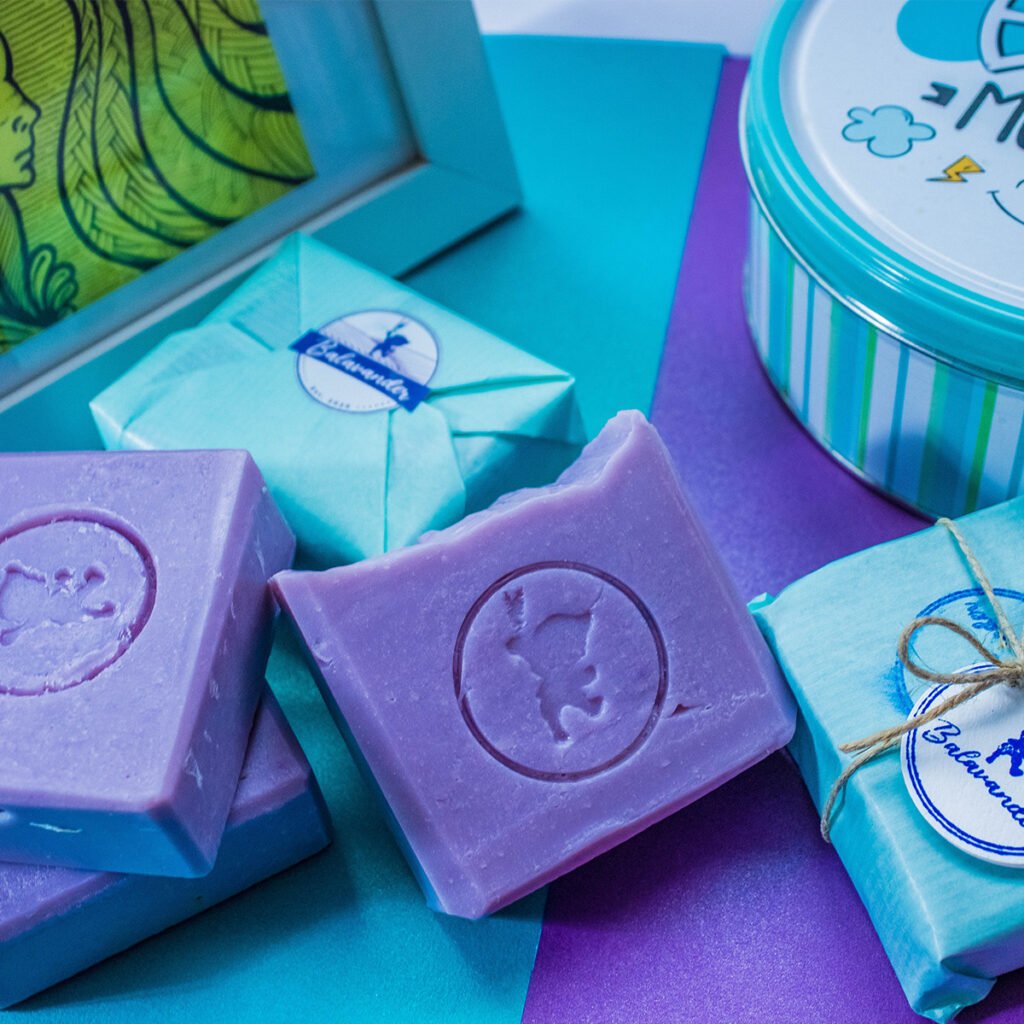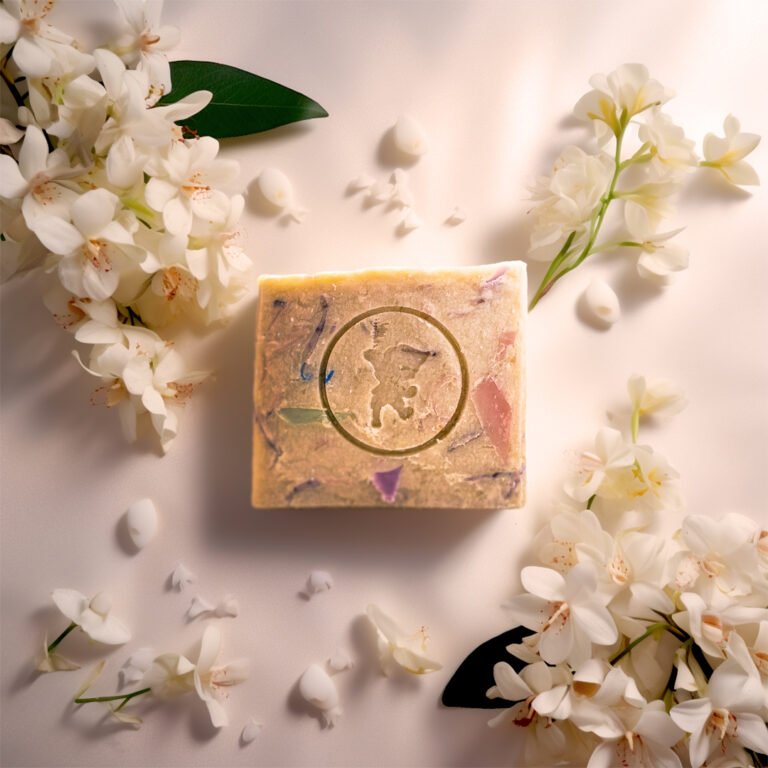
In today's world where we are surrounded by industrial products, more and more people are turning to natural alternatives for skin care. One of the most popular options are homemade soaps, which became a real hit among fans natural cosmetics. In this blog post, we will explore the fascinating world of homemade soaps, how they are made, and discover why they are the ideal choice for maintaining the natural beauty of the skin.
In the search for natural and beneficial skin care, homemade soap stands out as an outstanding choice. Designed with carefully selected ingredients, the homemade soap provides gentle cleansing with an extra dose of hydration. This unique product not only helps to maintain the natural balance of the skin, but also contributes to the preservation of the environment. By using homemade soap, in addition to taking care of your skin, you are also supporting a sustainable future. Learn about the many variations and benefits of homemade soap that will transform your daily skin care routine.
History of soap: Soap is one of the oldest products used by mankind for hygienic purposes. Although industrial soaps began to be mass-produced, homemade soaps retain the traditional approach to production. We will learn about the history of soap and discover how homemade soaps have developed over time.
Natural ingredients: One of the main advantages of homemade soaps is their composition of natural ingredients. We will discover some of the most common natural ingredients used in homemade soaps, such as vegetable oils such as olive oil, coconut oil, almond oil, as well as essential oils with healing properties. These ingredients provide hydration, care and healing effects on the skin.
Benefits for the skin: Homemade soaps are often rich in nutrients and do not contain the harmful chemicals found in industrial soaps. We will explore the benefits that homemade soaps provide to the skin, including moisturizing, soothing effects, helping to treat skin problems such as acne and eczema, and improving overall skin health.
Unique fragrance notes: One of the special features of homemade soaps is their wonderful fragrances. Due to the use of essential oils, homemade soaps can bring a variety of fragrant notes that make the daily routine of washing hands or showering a real experience of relaxation. Let's discover some of the most popular fragrance combinations used in homemade soaps.
An environmentally friendly choice: Industrial soaps are often packaged in plastic bottles or wrappers that contribute to environmental pollution. Homemade soaps are often produced in small batches and packaged in simple and biodegradable materials. We will talk about the ecological advantages of homemade soaps and how we can contribute to the preservation of our planet by using them.

Table of content
History of soap making
There are several legends about the origin of soap that have developed over time. Here is one of the most famous legends about the origin of soap:
Legend has it that soap was accidentally discovered in ancient Mesopotamia. According to legend, a rich woman named Saponia lived in the city of Babylon. She was walking by the Euphrates River one day and noticed a group of women washing clothes on the river bank. She noticed that a foam was forming around them that was soft and pleasant to the touch.
Intrigued by this phenomenon, Saponia approached the women and asked them how they created this foamy substance. The women explained to her that they had mixed animal fat with ash that contained alkaline substances from plants. After a while, this mixture started to form a soapy scum, which was great for washing clothes.
Saponia enthusiastically accepted this idea and started using soap to wash her laundry. She soon discovered that the soap was not only useful for washing clothes, but also had beneficial effects on the skin. The soap left her soft, hydrated and fragrant.
This legend reveals that soap was originally created as a result of an accidental experiment and later became an indispensable part of the hygiene routine. While this legend may be romantic, it should be remembered that the exact historical development of soap is more complex and involves different cultures and soap making techniques.
Nevertheless, the legend of Saponia provides an interesting story that reminds us of the value of soap in maintaining hygiene and skin care.
Soap making has a long and interesting history that goes back thousands of years. Here's an overview of the history of soap making:
The early traces of soap lead us all the way to ancient civilizations. According to some sources, the earliest records of soap come from Mesopotamia, around 2800 BC. Clay tablets were discovered showing the process of making soap from oil and ash.
The Egyptians also used soap as early as 1500 BC. They made soap from a combination of vegetable oils and alkaline materials, such as pumice and baking soda. Soap was used to wash the body as well as to clean clothes.
The ancient Greeks and Romans also had their own methods of making soap. The Greeks used a mixture of butter and ash to make soap, while the Romans used a mixture of lard and ash. Soap was valued and widely used in those civilizations, especially in thermal baths.
However, the use of soap declined during the Middle Ages in Europe, and instead people often used scented herbal mixtures or simply did not bathe regularly. It was not until the 12th century, with the return of contact with the Islamic world, that soap-making spread again in Europe.
The process of making soap saw significant progress in the 18th century. At that time, the French chemist Nicolas Lave published a paper describing the process of making soap with table salt, which led to the development of hard soap. This process was later improved with the addition of vegetable oils, such as olive oil and coconut oil, which resulted in better quality soap.
During the Industrial Revolution, soap making became more mass-produced and commercialized. The first industrial soaps appeared, which were produced in large quantities and spread globally. The use of various chemicals and artificial fragrances has become commonplace in industrial soap production.
Today there are various methods and techniques of soap making, including manual soap making at home as well as industrial production. People increasingly recognize the benefits of homemade soap and are interested in it natural and handmade soaps cases.
Soap making has a rich history that has developed over the centuries, and today it has become popular as a way to skin care in a natural and personalized way.
How to make homemade plant-based soap?
The time required to master soap making can vary depending on individual ability, commitment to learning and skill. Here are a few factors that can affect the time it takes to master the soap making process:
Basic knowledge: If you are an absolute beginner at soap making, it may take more time to learn the basics, such as measuring ingredients correctly, working with lye, choosing oils and additives, and understanding the saponification process.
Study and Practice: Regular study and practice play a key role in mastering the art of soap making. Through experimentation, following instructions, reading literature and attending workshops or courses, you can progress faster and improve your skills.
Understanding Ingredients and Techniques: Understanding the different vegetable oils, lye, additives, and soap mixing and shaping techniques can take time to study and understand. As you become familiar with the ingredients and techniques, you will become more confident and faster in the process of making soap.
Experimentation and creativity: Soap making is also an opportunity for experimentation and creativity. It can take time to research different recipes, oil combinations, colors and scents to find what works best for you.
With regular practice, research and dedication, you can gradually improve your soap making skills. It is important to be patient and enjoy the learning process. Remember that safety is also very important, so always follow directions, use protective equipment and adhere to safety measures during the soap making process.
Your favorite
Homemade soaps
If you want to see all our homemade soaps visit our store.
Recipe for making homemade plant-based soap
Ingredients:
- 450 g of olive oil
- 225 g of coconut oil
- 225 g of palm oil
- 70 g of lye (sodium hydroxide)
- 170 ml distilled water
- 15-20 ml of essential oil of your choice
- Optional accessories: colors, dried flowers, herbs, etc.
Note: When handling lye, be sure to wear protective equipment, such as gloves and goggles.
Instruction:
- Preparation:
- Prepare the soap mold by covering it with paper or lightly oiling it to make it easier to remove the soap after drying.
- Make sure you have all the ingredients and measuring cups.
- In an open area, out of the reach of children and pets, carefully measure the lye and distilled water. Add the lye to the water (never the other way around) and stir until completely dissolved. Allow the lye to cool to room temperature.
- Dissolving oil:
- In a suitable bowl, melt olive oil, coconut oil and palm oil over medium heat. Be careful not to boil. When the oils are completely melted, remove the pan from the stove and let it cool down a bit.
- Connecting oil and alkali:
- When the temperature of the oil and lye is between 43°C and 54°C, slowly pour the lye into the container with the oils. Stir the mixture constantly until the ingredients are completely combined and you get a thick mixture.
- Adding essential oil and supplements:
- Add the essential oil of your choice and mix until it is evenly distributed throughout the mixture. If you want to add colors or decorations, now is the time to do it. Gently stir the mixture to evenly distribute the colors or decorations.
- Shaping the soap:
- Carefully pour the mixture into the prepared soap mold. You can smooth the surface of the soap or decorate it with dry flowers, herbs or other decorative elements.
- Drying and ripening:
- Leave the soap at room temperature to cool completely and set. After 24-48 hours, carefully remove the soap from the mold. Place it on a rack or paper to further dry and ripen.
- Ripening of soap:
- The soap should be left to mature to achieve its final strength and longevity. This ripening usually lasts from 4 to 6 weeks. Turn the soap occasionally so that it dries evenly.
After curing, your homemade soap is ready for use! Be aware that soap recipes and making procedures will differ, so it is important to adjust ingredients and procedure according to your needs and desires.
Natural soaps
Tahiti - natural soap
420 RSD
Premium soaps
Violet - lavender soap
420 RSD
Homemade soap made from lard
Homemade soap made from lard has been present in households around the world for centuries, especially in the Balkans. This soap is simple, natural, and full of benefits for the skin, making it ideal for those who strive for natural and sustainable care.
Homemade soap made from lard is a simple, natural, and extremely beneficial product for skin care. Its production does not require much time or effort, and the benefits it brings to your skin are invaluable. Whether you have sensitive skin, or simply want a natural solution for daily care, this soap is a perfect choice for you.
Why is homemade soap made from lard good?
Lard is rich in fatty acids, vitamins, and nutritious ingredients that are excellent for the skin. Here are several reasons why this soap is so valued:
- Deeply hydrates the skin: Thanks to high concentrations of oleic acid, lard soap helps maintain skin hydration, leaving it soft and elastic.
- Suitable for sensitive skin: This soap is gentle and does not cause irritations, making it suitable for people with sensitive skin or those who suffer from eczema and other skin problems.
- Natural antiseptic: Homemade soap made from lard contains natural fatty acids that have mild antiseptic properties, helping to cleanse the skin of bacteria.
- Without synthetic additives: Unlike commercial soaps, homemade soap does not contain artificial fragrances, colors, and preservatives, making it a completely natural product for skin care.
Your favorite
Homemade soaps
If you want to see all our homemade soaps visit our store.
How to make homemade soap from lard?
Making homemade soap from lard is a simple process that requires a few basic ingredients and a little time. Here are the steps you can follow to make your soap:
Required ingredients:
- 1 kg lard
- 300 g sodium hydroxide (caustic soda)
- 700 ml water
- Essential oils of choice (lavender, rosemary, tea tree) – optional
Procedure:
Preparing lard: Melt the lard at low temperature until it becomes liquid. Let it cool to room temperature.
Preparing caustic soda: In a large container, carefully add sodium hydroxide to water (never the reverse!) and stir until completely dissolved. Let the mixture cool.
Mixing lard and soda: When both the lard and soda solution are at approximately the same temperature (around 40°C), carefully pour the soda solution into the lard, stirring constantly.
Adding essential oils: If you wish, add a few drops of essential oils of your choice to give the soap a pleasant scent and additional benefits.
Pouring the mixture: Pour the mixture into molds (you can use silicone molds or even recycled plastic containers) and leave to stand in a cool and dry place.
Soap curing: The soap will need to stand and cure for 4-6 weeks before it is ready for use. During this period, the soap becomes hard and the pH value is neutralized.
Differences between lard soap and natural plant-based soaps
Lard soap and plant-based soaps share many common characteristics, such as natural composition and gentle properties, but there are also some key differences that can influence the choice of those who use them.
Basic ingredient: While lard soap uses animal fat as the basic ingredient, plant-based soaps use oils such as coconut, olive, or palm oil. This can be important for those who prefer vegan products or avoid animal products.
Texture and feel on skin: Lard soap often creates rich, creamy lather that leaves skin soft and hydrated. On the other hand, plant-based soaps can provide a somewhat lighter feel, but are equally nourishing, especially if they contain oils like shea butter or avocado oil.
Moisture and nourishment: Lard has a natural ability to retain moisture in the skin, making it an excellent choice for dry and sensitive skin. Plant-based soaps, depending on the oils used, can be equally hydrating, but may have a different effect, depending on the skin type.
Scent and additional benefits: Plant-based soaps often use a wide spectrum of essential oils and herbal additives that provide various aromatic and therapeutic benefits. Lard soap can be enriched with essential oils, but naturally has no scent that is characteristic of plant oils.
Ecological aspects: Plant-based soaps are often more popular among those who deal with sustainability and ecological consciousness, while lard soap can be a choice for those who use all parts of animals and do not want to waste fats.
Conclusion
Homemade soaps are a wonderful way to care for your skin in a natural and gentle way. Their natural ingredients, benefits for the skin, wonderful fragrances and environmental friendliness make them an attractive choice for everyone who wants to maintain the natural beauty of the skin. Try a few homemade soaps and indulge in the enchanting world of natural care!
The difference between lard soap and plant-based soaps gives you the opportunity to choose the product that best suits your needs and values, whether it's traditional lard soap or soap based on plant oils.
If you don't want to spend your time experimenting with various ingredients, but still love natural homemade soaps, what we can warmly recommend are homemade natural soaps from our workshop, which we ourselves regularly use and adore.
With smile,
Balavander





Leave a Reply